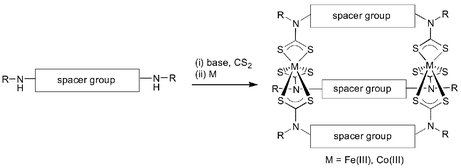Metal-directed self-assembly of bimetallic dithiocarbamate transition metal cryptands and their binding capabilities†
Abstract
A novel family of redox-active dinuclear transition metal based cryptands self-assembled from dithiocarbamate ligands has been synthesised; depending upon the nature of the spacer groups these new cryptand systems have been shown to electrochemically recognise the binding of cations or anions.


 Please wait while we load your content...
Please wait while we load your content...